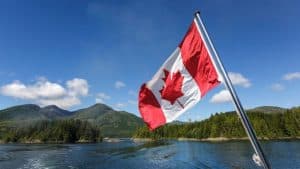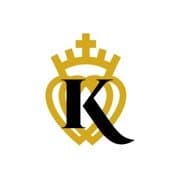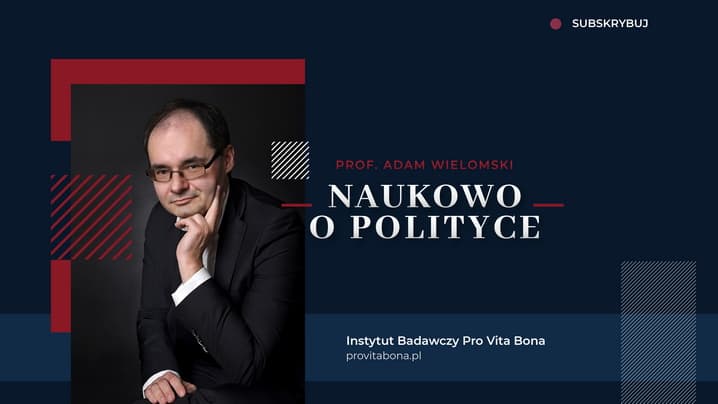July 1 is Canada Day (originally called Dominion Day), the date of the founding of the current Canadian State in 1867. The celebration of Canada Day has been particularly fraught this year,
after the discovery of 215 unmarked graves of children at the former Kamloops Indian Residential School in British Columbia, and 751 unmarked graves at the former Marieval Indian Residential School in Saskatchewan. The worst possible interpretations have been made of these discoveries, and of the whole former Indian Residential School system.
On June 6, 2021, there was the horrific attack on a Muslim family, four of whom died, and one who was severely injured. This has brought about denunciations of Canada as an inherently racist society, supposedly riven with “Islamophobia”, and resulted in a frantic back-pedaling of previously held positions in the federal Conservative Party.

Indeed, the last few weeks seem to have reached an absolute apogee of the negativity and hatred towards traditional Canada, which had actually begun, to some extent, in the 1960s.
While there is no returning to the Old Canada which existed “before the Sixties”, it is possible that the “New Canada” could reach out to incorporate some better aspects of the Old Canada – to create a new synthesis – “Canada Three” – rather than continue on the path of never-ending negation.
It is argued that a return to true federalism in Canada may lead to some forms of neo-traditionalism.
What is Canadian identity? There have been at least two, very different Canada’s — the one that existed before the 1960s, and the one that exists today. Traditional Canada was defined by its founding nations — the English (British) and the French (the latter mostly centered in what became in 1867 the Province of Quebec). The two nations long pre-existed Canadian Confederation. The founding document of the Canadian State (then frequently called the Dominion of Canada) was the British North America (BNA) Act, which was approved by the British Parliament in London in 1867. The Aboriginal peoples were included insofar as they were traditionally considered to be under the special protection of the Crown.
An understanding of the deep extent to which the British Canadian identity was formerly held – and a less negative view about its past role in Canada – are probably beyond the ken of most people in today’s “New Canada”, or “Canada Two.” Obviously here I am using the term “New Canada” to refer to the post-1960s Canada whose main architects have been the Liberal Prime Ministers Lester B. Pearson (1963-1968), and Pierre Elliott Trudeau (1968-1984, except for nine months in 1979-1980). It could also be called the “Trudeaupia”.
It should be noted, nevertheless, that the term “New Canada” was quirkily deployed by Reform Party leader Preston Manning as the name for the model of Canada which he himself was proposing – basically, a more decentralized federation. Presumably, he chose the name to partially disguise what amounted to the neo-traditionalism of the Reform Party platform. Manning took the idea of “reform in order to preserve” very seriously. He sometimes seemed to argue positions which seemed “radical” for ends which were conservative.
It should also be noted that during the debate over the proposed Meech Lake Accord (1987-1990) and Charlottetown Agreements (1992) – which explicitly recognized Quebec as “a distinct society” – and might have led to a more decentralized federation — the prominent liberal commentator Richard Gwyn referred contemptuously to the Canada which the Meech Lake Accord and Charlottetown Agreements would bring into being as “Canada Two”. This is not the sense in which I’m using this term. (Neither the Meech Lake Accord nor the Charlottetown Agreements ever became the law of the land.)

Among the leading figures critical of current-day Canada are William D. Gairdner (who has brought out in 2010 a new edition of his ground-breaking book, The Trouble with Canada: A Citizen Speaks Out — originally published in 1990), and the late Ken McDonald, whose best-known book is, probably, His Pride, Our Fall: Recovering from the Trudeau Revolution (1995).
Current-day Canada is officially defined as a multicultural society. A putative Canadian identity is said to be constituted out of the “mosaic” or “kaleidoscope” of various heterogeneous cultures. Since 1988, after the Canadian Supreme Court struck down some residual restrictions, Canada has no laws whatsoever regulating abortion. Same-sex marriage has been deeply entrenched since the federal Parliament approved it in 2005 — responding to two decisions of lower courts in 2003 that were never appealed by the federal government.
The upholding of current-day multicultural and gender politics orthodoxy is policed by various quasi-judicial tribunals, including the so-called Human Rights Commissions, which can sharply punish speech deemed critical of various minorities and current-day political arrangements. Their operations have been pointedly described in Ezra Levant’s Shakedown: How Our Government is Undermining Democracy in the Name of Human Rights (2009).
There are also in Canada today varieties of separatism. One of these arises out of the French/English duality of what were very traditionally called the two founding peoples of Canada. The Quebecois sovereigntists mostly view the Canadian State with antipathy. Also emerging since the 1960s, radical Aboriginal separatism looks with deep disdain at Canada. The idea is since the land was all „stolen” anyway, the Canadian State has no inherent legitimacy.
There is also a tendency among such archetypically Canadian institutions as the taxpayer-funded CBC (Canadian Broadcasting Corporation), to „read out” certain groups of people as „un-Canadian.” The CBC views people who hold what are considered „reactionary” or „mean-spirited” social and cultural outlooks as simply not part of „the Canadian Way”. Such outlooks are usually characterized as American-inspired, hence „un-Canadian”. The so-called cultural industries in Canada are also mostly government (i.e., taxpayer) subsidized, especially the so-called “CanLit” (Canadian literature). Unfortunately, many of these so-called “public” cultural institutions pride themselves on their total and pristine exclusion of anything smacking of traditionalism or conservatism.
There are, in fact, multifarious techniques today for rendering almost all of the traditional Canada to appear as utterly hideous to so-called “decent” human sensibilities.
Today, except for certain residues in political institutions, the British Canada has been all but annihilated. Nevertheless, it could be argued that Canada still remains in the penumbra of the WASPs, as many of them – whether in corporate or governmental structures — have taken on the role of being one of the most „progressive”, most politically-correct groups in Canada. Thereby, their elite enjoy lives of enormous material comfort and cushy sinecures, even as the New Canada conceptually vitiates all that their ancestors once held dear.
Obviously, it is impossible to return to the Old Canada. Nevertheless, it is possible that there may be the chance for a „post-New Canada” or “Canada Three” that will likely move in the direction of various scenarios of so-called “provincialization”. The contradictions between the current-day hyper-centralization, to which huge economic resources are perforce committed – and the vapid cultural and spiritual hollowness at the core of the administrative “command” apparatus – will likely become ever more apparent.
Perhaps the original idea of the European Community as a „union of sovereign states” — rather than that of today’s E.U., which has largely become a bureaucratic „super-state” — could serve as model for this „Canada Three.” Presumably, the “Canada Three” would be some kind of positive, uplifting synthesis of the best elements of both, the traditional and the current-day Canada – rather than just an extension and intensification of “Canada Two”.
The “Canada Three” scenario could be similar to ideas of the so-called „Swiss model” or “cantonization.” The hope would be that radical decentralization would allow for various arrangements that would actually make “Canada Three” a stronger and more “rooted” federation or union in its constituent parts. It would also hopefully strengthen intermediary institutions such as churches, and local associations.
The political efficacy of true federalism is that it allows for the expression of divergent tendencies that would otherwise have a centrifugal effect on a given polity. An “uplifting” synthesis of the Old and New Canada is urgently needed.
Mark Wegierski



